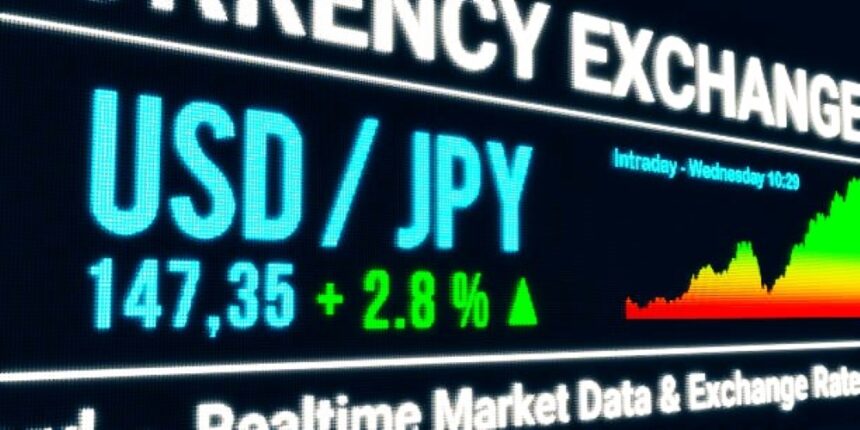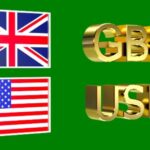Japanese Yen (JPY) continues its upward trajectory.
The Japanese Yen (JPY) continues its upward trajectory against the US Dollar (USD), reaching its highest level since early December. The currency’s strength driven by mounting speculation that the Bank of Japan (BoJ) will proceed with interest rate hikes in response to robust economic data.
Japan’s Consumer Price Index (CPI) and fourth-quarter Gross Domestic Product (GDP) growth figures, released last week, provided strong indications that the BoJ may take a more aggressive monetary policy approach than previously anticipated. Moreover, expectations of sustained wage increases fueling consumer spending further reinforce the likelihood of policy tightening by the central bank.
Adding to the JPY’s appeal is the ongoing uncertainty surrounding US trade policies under President Donald Trump, particularly concerning tariffs and their potential repercussions on the global economy. The relative safe-haven status of the Japanese Yen makes it an attractive option for investors during times of economic uncertainty, further bolstering its strength against the USD.
Japanese Yen Buying Interest Remains Unabated Amid Rising BoJ Rate Hike Bets.
Several fundamental factors contribute to the Japanese Yen’s recent surge:
Rising Inflation Supports Rate Hike Expectations: Data released on Friday indicated that Japan’s core inflation reached a 19-month high in January, reinforcing market expectations that the BoJ will continue tightening monetary policy. Higher inflation levels are often an indicator that central banks need to adjust interest rates to maintain economic stability.
BoJ Governor’s Stance on Bond Buying: BoJ Governor Kazuo Ueda cautioned on Friday that the central bank could ramp up its bond purchases if significant market disruptions lead to a sharp rise in government bond yields. His remarks suggest that the BoJ remains committed to ensuring financial market stability while managing the transition towards a more normalized interest rate policy.
Retreating JGB Yields: The yield on Japan’s benchmark 10-year government bond (JGB) has pulled back from the highest level recorded since November 2009. This retreat in bond yields limits the JPY’s gains, but overall sentiment remains bullish amid BoJ rate hike expectations.
Weakening USD Amid US Economic Concerns
While the JPY’s rally being driven by domestic economic conditions, the USD’s weakness also plays a crucial role in shaping the USDJPY exchange rate. Several factors contribute to the US Dollar’s subdued performance:
Concerns Over US Consumer Spending: A disappointing sales forecast from Walmart has raised concerns about the health of the US consumer. Given that consumer spending accounts for a significant portion of the US economy, any signs of weakening demand can weigh on economic growth and, consequently, on the USD.
Declining US Business Activity: The flash S&P Global US Composite PMI dropped to 50.4 in February from 52.7 in January, signaling a slowdown in overall business activity across the private sector. This decline indicates that economic expansion is losing momentum, which could influence the Federal Reserve’s monetary policy stance.
Deteriorating Consumer Sentiment: The University of Michigan’s Consumer Sentiment Index fell sharply from 71.7 in January to 64.7 in February—a 15-month low. This unexpected decline reflects growing consumer concerns about inflation and economic stability, which may contribute to softer consumer spending in the coming months.
Rising Inflation Expectations: Inflation expectations among US households remain elevated. Over the next year, inflation is expected to surge to 4.3%, the highest level since November 2023, while the five-year outlook projects inflation at 3.5%, the highest since 1995. Persistently high inflation could limit the Federal Reserve’s ability to implement rate cuts in the near term, creating additional uncertainty for USD traders.
Federal Reserve’s Cautious Approach: Federal Reserve officials remain cautious about future interest rate cuts due to persistent inflationary pressures. The uncertainty surrounding President Donald Trump’s tariff policies and protectionist measures further complicates the outlook for the US economy, leading to sustained pressure on the USD.
BoJ Policy Expectations vs Federal Reserve Stance
The diverging monetary policy outlooks of the Bank of Japan and the Federal Reserve create a compelling narrative for currency traders. While the BoJ is increasingly seen as moving towards policy normalization and rate hikes, the Federal Reserve’s path remains uncertain due to sticky inflation and mixed economic data.
In Japan, the prospect of higher interest rates is driven by a strong CPI reading, robust GDP growth, and the potential for wage-driven inflationary pressures. The BoJ’s willingness to intervene in bond markets to prevent excessive yield spikes suggests a controlled approach to monetary tightening, but overall, the policy direction appears to favor a stronger JPY.
In contrast, the US Federal Reserve faces a more complex scenario. While inflation remains a concern, economic growth appears to be slowing, as evidenced by weaker business activity and consumer sentiment. This uncertainty makes it difficult for the Fed to justify additional rate hikes, yet it also prevents the central bank from committing to rate cuts in the near future. As a result, the USD lacks strong support, allowing currencies like the JPY to gain ground.
USDJPY Technical Outlook
The USDJPY pair remains under pressure, hovering around the 149.00 mark as JPY buying interest continues. However, certain technical and fundamental factors could influence the currency pair’s movement in the coming weeks:
Technical Resistance and Support Levels:
The next major resistance level for USDJPY seen near 150.00, while strong support lies around 148.50. If JPY strength persists, a break below this support level could trigger further downside movement for the pair.
Market Reactions to Economic Data: Upcoming economic releases, including US inflation and labor market reports, will be closely watched by traders. Any signs of economic weakness in the US could accelerate USD selling, pushing USDJPY lower.
Geopolitical and Trade Developments: Ongoing trade policy uncertainty under President Trump’s administration could further weigh on the USD. Investors will monitor any announcements regarding tariffs or protectionist measures that may impact global trade and currency markets.
BoJ Policy Announcements: Any signals from the Bank of Japan regarding the timing and magnitude of rate hikes could significantly influence JPY movements. A more hawkish stance from the BoJ would likely fuel additional gains for the Yen.
Conclusion
The Japanese Yen continues to strengthen against the US Dollar, supported by expectations of BoJ rate hikes and favorable economic data. The JPY’s safe-haven appeal further enhanced by global economic uncertainties, particularly those related to US trade policies and inflation concerns. Meanwhile, the USD remains under pressure due to disappointing economic indicators and Federal Reserve uncertainty.
As markets navigate these evolving dynamics, traders will closely watch central bank actions, economic data releases, and geopolitical developments to gauge the future direction of USD/JPY. If BoJ policy expectations continue to firm while US economic concerns persist, the Yen may maintain its bullish bias in the near term.









